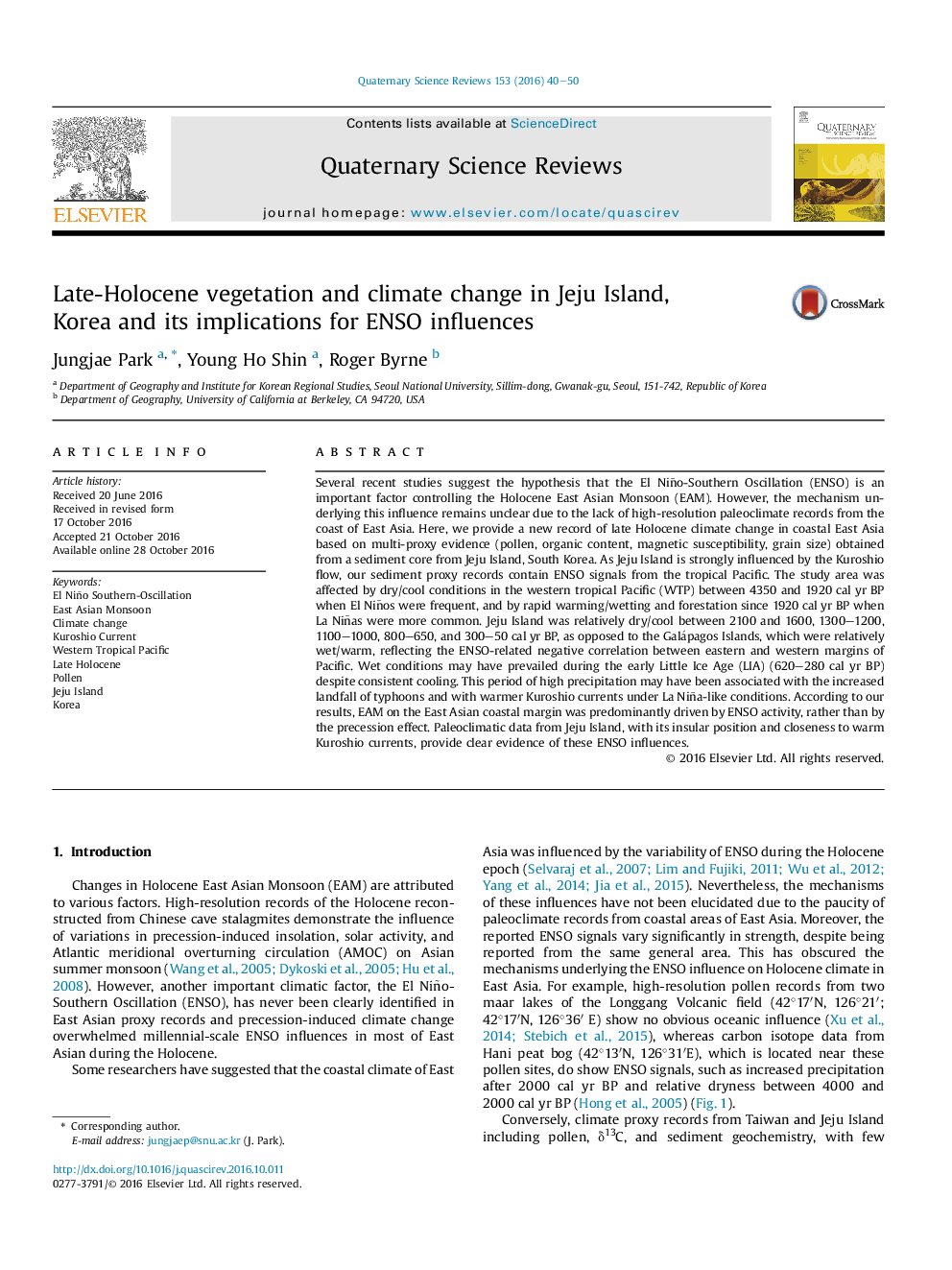| کد مقاله | کد نشریه | سال انتشار | مقاله انگلیسی | نسخه تمام متن |
|---|---|---|---|---|
| 6446227 | 1640782 | 2016 | 11 صفحه PDF | دانلود رایگان |
عنوان انگلیسی مقاله ISI
Late-Holocene vegetation and climate change in Jeju Island, Korea and its implications for ENSO influences
دانلود مقاله + سفارش ترجمه
دانلود مقاله ISI انگلیسی
رایگان برای ایرانیان
کلمات کلیدی
موضوعات مرتبط
مهندسی و علوم پایه
علوم زمین و سیارات
زمین شناسی
پیش نمایش صفحه اول مقاله

چکیده انگلیسی
Several recent studies suggest the hypothesis that the El Niño-Southern Oscillation (ENSO) is an important factor controlling the Holocene East Asian Monsoon (EAM). However, the mechanism underlying this influence remains unclear due to the lack of high-resolution paleoclimate records from the coast of East Asia. Here, we provide a new record of late Holocene climate change in coastal East Asia based on multi-proxy evidence (pollen, organic content, magnetic susceptibility, grain size) obtained from a sediment core from Jeju Island, South Korea. As Jeju Island is strongly influenced by the Kuroshio flow, our sediment proxy records contain ENSO signals from the tropical Pacific. The study area was affected by dry/cool conditions in the western tropical Pacific (WTP) between 4350 and 1920 cal yr BP when El Niños were frequent, and by rapid warming/wetting and forestation since 1920 cal yr BP when La Niñas were more common. Jeju Island was relatively dry/cool between 2100 and 1600, 1300-1200, 1100-1000, 800-650, and 300-50 cal yr BP, as opposed to the Galápagos Islands, which were relatively wet/warm, reflecting the ENSO-related negative correlation between eastern and western margins of Pacific. Wet conditions may have prevailed during the early Little Ice Age (LIA) (620-280 cal yr BP) despite consistent cooling. This period of high precipitation may have been associated with the increased landfall of typhoons and with warmer Kuroshio currents under La Niña-like conditions. According to our results, EAM on the East Asian coastal margin was predominantly driven by ENSO activity, rather than by the precession effect. Paleoclimatic data from Jeju Island, with its insular position and closeness to warm Kuroshio currents, provide clear evidence of these ENSO influences.
ناشر
Database: Elsevier - ScienceDirect (ساینس دایرکت)
Journal: Quaternary Science Reviews - Volume 153, 1 December 2016, Pages 40-50
Journal: Quaternary Science Reviews - Volume 153, 1 December 2016, Pages 40-50
نویسندگان
Jungjae Park, Young Ho Shin, Roger Byrne,